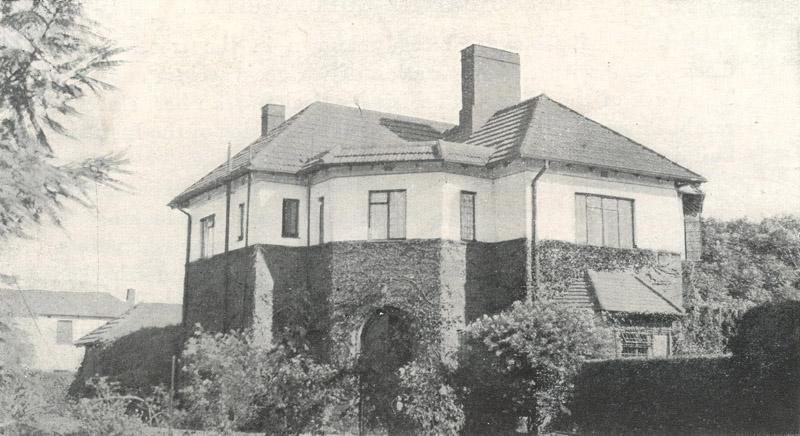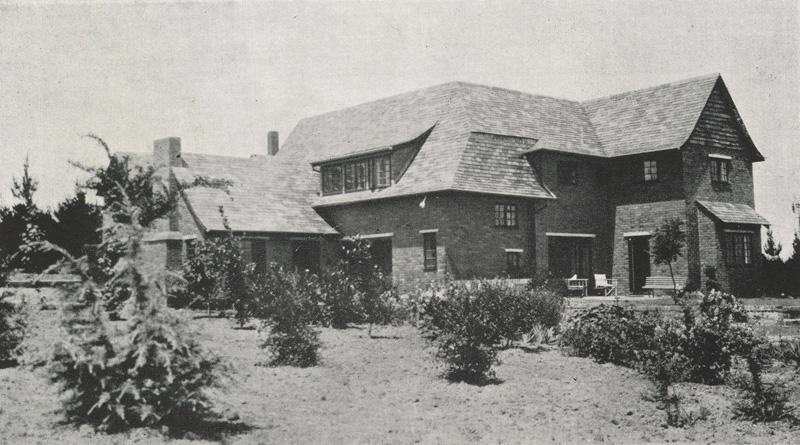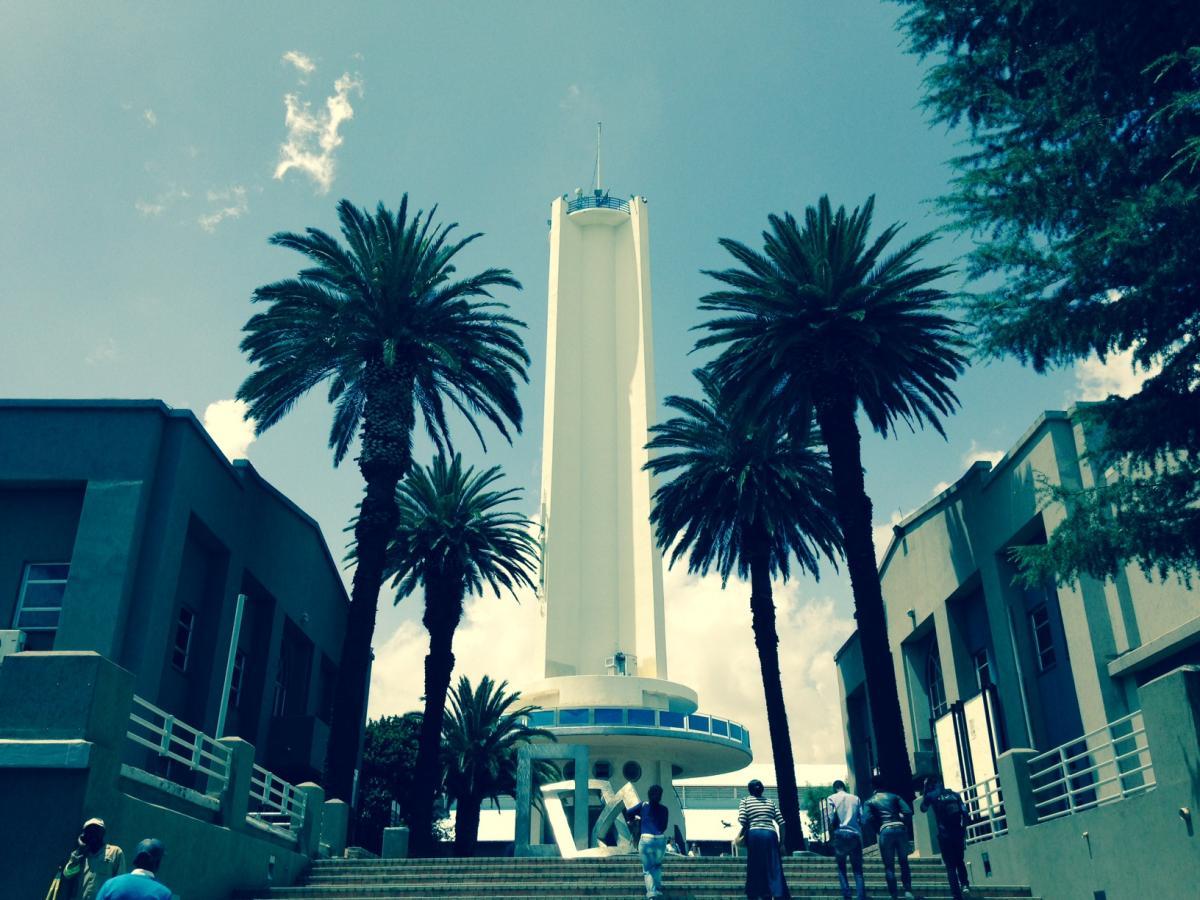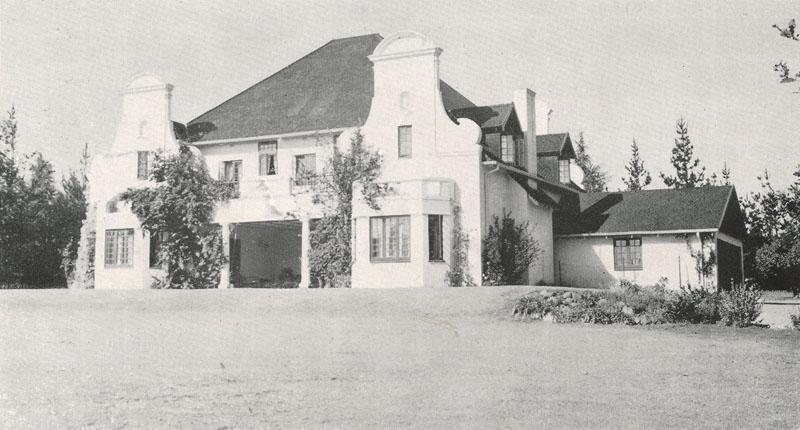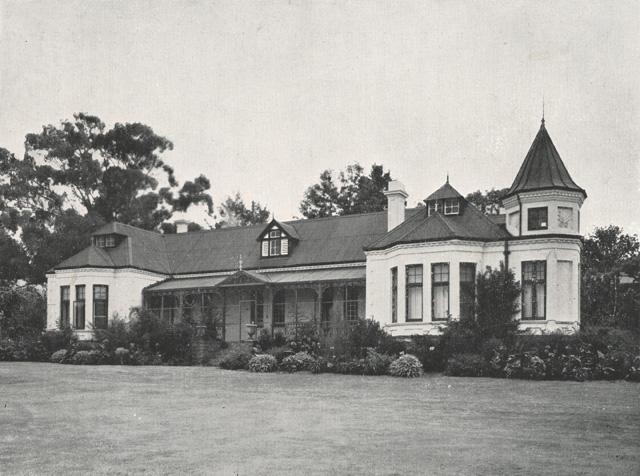
In 1948 a book called Homes of the Golden City was published. The book is about Johannesburg. The initiator of the project was Allister Macmillan, who sadly died before the book was completed. The project was brought to completion by a young writer Eric Rosenthal (1905-1983) who went on to be be a prolific author on historical themes.
House Grant Saxonwold (Homes of the Golden City)
Homes of the Golden City was researched and developed during the Second World War but because of Macmillan's untimely passing and the war itself publication was delayed for several years. We do not know who the photographer was. The book is fairly difficult to come by and now an expensive collectible item (possible costing over R2000). It followed the prewar sequences of books published by Macmillan on Johannesburg, the Witwatersrand, Pretoria, Durban, East Africa and Rhodesia. The Durban volume was called Durban Past and Present and was published in 1936.
At this stage the biographical information I have on Macmillan is sketchy. Allister Macmillan was of Scottish ancestry. He worked as a journalist in England and then emigrated to Durban in the early 20th century, where he moved into book publishing. He travelled widely visiting many countries including China, India, Indonesia and Mauritius. He moved on to the West Indies where he produced three volumes on that region (The Red Book of the West Indies, 1st edition 1922). He later produced books along the formula of a combination of historical commercial and descriptive on the West Coast of Africa, Malta and Gibraltar, Mauritius, Rhodesia and Eastern Africa. The Mauritius volume was republished in 2000. Various South African titles date from the 1930s.
The Homes of the Golden City was a sequel to an earlier very successful volume on Johannesburg called The Golden City which has no date but was published in the 1930s. My own copy is a 2nd edition and must have been published some time after 1933. The publisher was W H and L Collingridge Ltd of London. This volume is very handsome with thick satin paper, gilt edging, a brown cloth imitation crocodile skin cover and city coat of arms embossed in gold on the cover with numerous illustrations. If you are in search of Johannesburg history this is the number one choice. The information is more substantial (with over 20 chapters from as many contributors) and there are more illustrations. This volume also contains some of Macmillan's own, somewhat dated and rather bad, poems on Johannesburg. The most useful chapters for the purposes of historical background and research are those on pre-history (contributed by Raymond Dart), early history (by the important Joburg historian Hedley Chilvers), the contribution of the Strubens brothers (by Arthur Struben - the son of Harry Struben) and one on rail transport. There is a substantial chapter on the five regiments of Johannesburg and finally the chapter on the gold mining industry by FA Osborn is a thumbnail sketch of the issues and problems of the gold mining industry of the thirties. There is a helpful coverage to of the seven gold mining groups which had emerged triumphant and dominant by the early 1930s.
In contrast, Homes of the Golden City is a hard cover book with rust brown cloth boards and gothic script golden lettering for the title. Prices range from R1500 to over R2000. Because this volume simply reproduces 6 chapters, which had already been published in the earlier Golden City, it was a "potboiler", but the novelty lay in the new chapter by G E Pearse and in that rich archive of photographs of Johannesburg homes. All of this means that both volumes become collectable despite the repetition. So the bad news is that the serious Johannesburg collector needs both volumes.
Home in Morningside (Homes of the Golden City)
The books were a combination of historical, descriptive and commercial. They were meant to be sold to and perhaps read by the affluent in their homes and businesses and were the coffee table volumes of their day. The books also had the flavour of a period anthology, more so because of the advisement the books carried. Chapters were contributed by well known figures of the era, one presumes these were paid contributions. For example in the case of the Homes of the Golden City, there is a chapter by Professor John Phillips on the Flora of the Golden City. Phillips (1899-1987) was the professor of Botany at the University of the Witwatersrand and Head of the Department between 1931 and 1948 . However, I should add that all these chapters with the exception of the Pearse chapter had already appeared in the earlier The Golden City.
My favourite essay in this book (Homes of the Golden City) is the long serious chapter on the Evolution of the Johannesburg Home by Professor Pearse. Pearse was the distinguished professor of architecture at the University of the Witwatersrand, whose forte was 18th century furniture and Cape Architecture (click here for a bio). He was also the man who grappled with the modern wave in his memorable design of the now iconic Tower of Light for the Empire Exhibition of 1936, so making his contribution to the International Style of Johannesburg. The Pearse chapter in Homes of the Golden City is a long rambling but interesting overview of the evolution of the grand house, rather in the style of the classic History of the English House by Nathaniel Lloyd. But Pearse fails to include a single footnote, documentary source or cross reference to any other scholar, though in a single sentence he mentions the influence of Frank Lloyd Wright, Walter Gropius, Mies van der Rohe and Le Corbusier on what he calls a younger generation of South African architects, but frustratingly never drops a contemporary architect's name. The juxtaposing of themes such as Children of the Golden City, Native Folklore, Flora, Street Scenes add to the charm and period character of the book, though it reflects more of a pre World War II stance than post World War II anticipation of rapid change.
Tower of Light (The Heritage Portal)
Clearly the commercial angle of the book was the inclusion of over 200 illustrations of the modern suburban, important homes of Johannesburg. The suburbs covered include Saxonwold, Westcliff, Houghton, Melrose, Parktown and others. However, the weakness of the book is that there is barely any information about the photographs and as such it is a limited documentary source for heritage purposes. These illustrations on a double page spread are interleaved throughout the book and inserted between the text pages. So two pages of text are followed by two pages of illustrations. These photographs were all professionally taken in black and white. The layout is mainly with four pictures on a double spread page. The caption below each of the illustrations gives a suburb and the current owner, but there is no address, no date, no architect. Some houses I recognize and can pin point precisely...they are the heritage gems of the suburbs I know well.
I think this book is a rich documentary source, although limited at the moment as explained: its value lies in giving views of fine houses in the upper class suburbs in Johannesburg dating from a time of city prosperity, permanent settlement and affluence. I think the record of the house could become a part of the heritage case for preservation (although many of the houses illustrated in the book no longer exist).
House Osborne Oaklands (Homes of the Golden City)
Over the last few months the Artefacts team has been running a treasure hunt for the houses recorded in this book. Please take a look and add any information you can (click here for a list of homes)
Kathy Munro is an Honorary Associate Professor in the School of Architecture and Planning at the University of the Witwatersrand. She enjoyed a long career as an academic and in management at Wits University. She trained as an economic historian. She is an enthusiastic book person and has built her own somewhat eclectic book collection over 40 years. Her interests cover Africana, Johannesburg history, history, art history, travel, business and banking histories.

